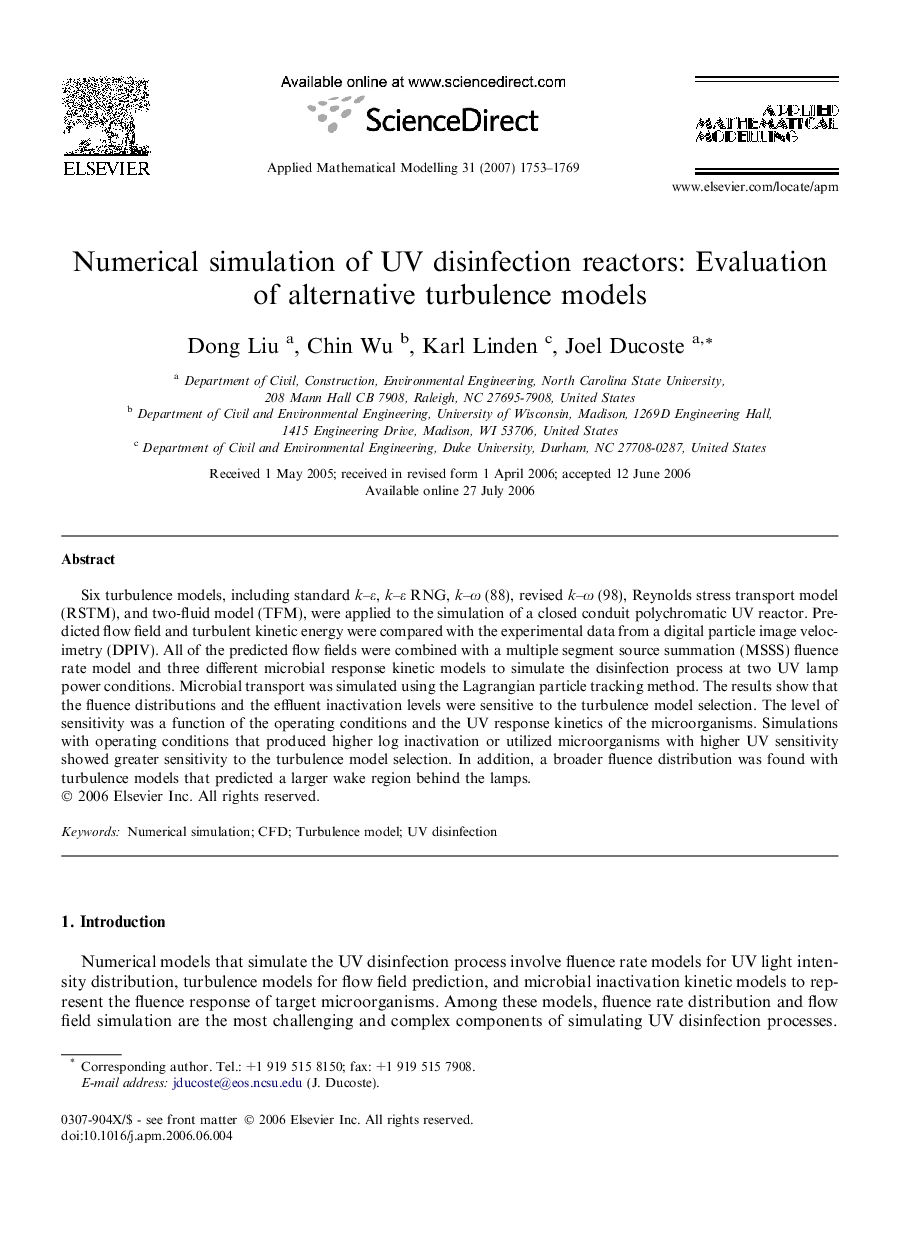| Article ID | Journal | Published Year | Pages | File Type |
|---|---|---|---|---|
| 1707052 | Applied Mathematical Modelling | 2007 | 17 Pages |
Six turbulence models, including standard k–ε, k–ε RNG, k–ω (88), revised k–ω (98), Reynolds stress transport model (RSTM), and two-fluid model (TFM), were applied to the simulation of a closed conduit polychromatic UV reactor. Predicted flow field and turbulent kinetic energy were compared with the experimental data from a digital particle image velocimetry (DPIV). All of the predicted flow fields were combined with a multiple segment source summation (MSSS) fluence rate model and three different microbial response kinetic models to simulate the disinfection process at two UV lamp power conditions. Microbial transport was simulated using the Lagrangian particle tracking method. The results show that the fluence distributions and the effluent inactivation levels were sensitive to the turbulence model selection. The level of sensitivity was a function of the operating conditions and the UV response kinetics of the microorganisms. Simulations with operating conditions that produced higher log inactivation or utilized microorganisms with higher UV sensitivity showed greater sensitivity to the turbulence model selection. In addition, a broader fluence distribution was found with turbulence models that predicted a larger wake region behind the lamps.
